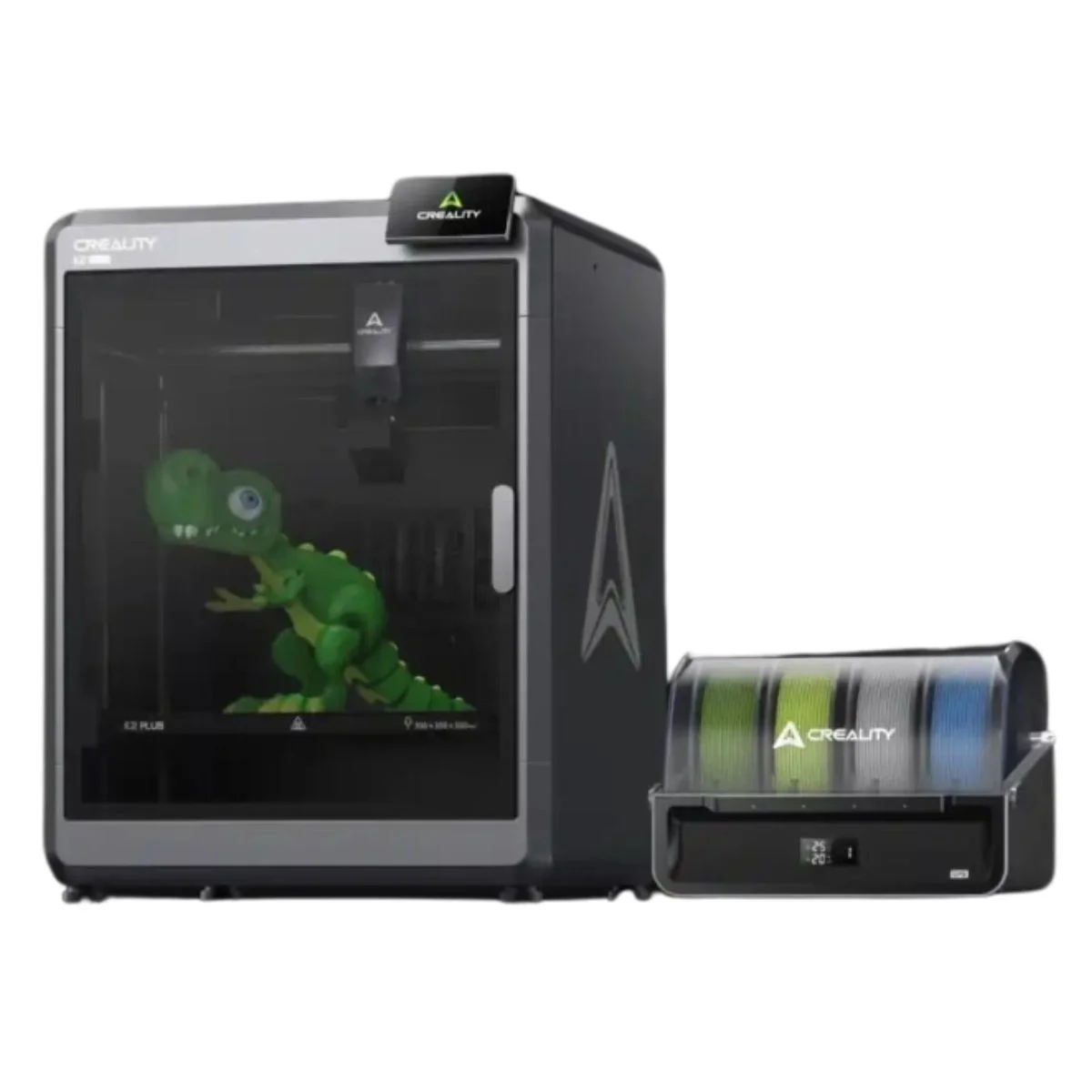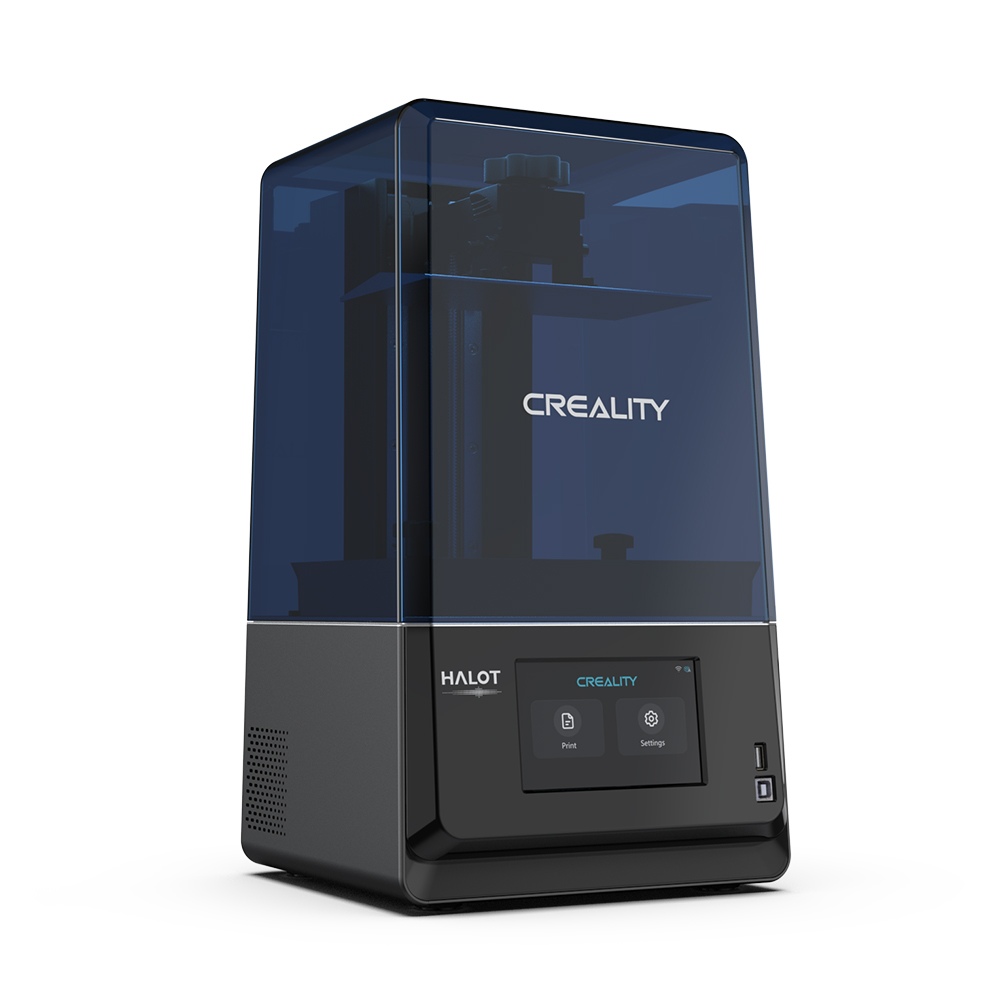Compare K2 Plus vs Halot One Plus
Comparison between the best 3D printers
Choose the best 3D printer at the best price. The cheapest 3D printers are here.
Buy a 3D printer here with 3D Fila.
 |
 |
|
| Model | K2 Plus[BUY K2 Plus] |
Halot One Plus[BUY Halot One Plus] |
| Printing Material | Filament | Resin |
| Buy Filament for Creality K2 Plus | Buy Resin forCreality 3D Halot One Plus | |
| Estimated price | $1500,00 | $399,00 |
| Manufacturer | Creality | Creality 3D |
| Release Year | 2024 | 2022 |
| Print Volume [mm] | 350x350x350 | 102x172x160 |
| Printer Size [mm] | 495x515x640 | 236x245x416 |
| Weight [kg] | 33,5 | 6,8 |
| Power Loss Recovery | YES | NO |
| Maximum Resolution [mm] | 0,1 | |
| Processor | ||
| Display | Touchscreen 4,3'' | |
| Power Supply | 1200 W | |
| Connectivity | USB / WIfi | USB / Wi-Fi |
| Operating systems | Windows, Linux, Macbook | |
| Date of registration in the system | 2024-06-26 | 2022-10-11 |
| Release date | 2024 | 2022 |
| Extra features | The Creality K2 Plus 3D Printer stands out for its multicolor printing, large build volume (350x350x350 mm) and Apus Direct Drive extruder with tri-metal protection nozzle. It features automatic anti-tilt leveling, FOC closed-loop motors and active chamber heating. In addition, it has an intelligent CFS filament management system, cameras for calibration and monitoring, a 4.3-inch touchscreen and advanced sensors to optimize the printing process. | Crealitys Halot-One Plus printer stands out for its 4K+ resolution that delivers sharp details and consistent surfaces. It features a fast and responsive 5-inch LCD interface, as well as easy-to-use Halot Box software. It offers Wi-Fi connectivity and remote print monitoring, as well as an integrated air filtration unit, a rare feature in this price range. The Halot-One Plus is designed for the prosumer market, combining high quality with advanced features such as Wi-Fi and air filtration. During testing, it stood out for implementing these features at an affordable cost, while maintaining functionality. It features an attractive design with a UV-resistant blue cover and a robust dual rail system for the Z-axis, ensuring smooth and consistent movements. The large LCD and high resolution of the LCD mask (4320 x 2560) are other strong points, allowing for fine details and textures in prints. |
| Support for multiple colors and materials (AMS and CFS) | YES | NO |
Notes * |
||
| Cost-benefit | 7 / 10 | 8 / 10 |
| Hardware | 7.2 / 10 | 1.4 / 10 |
| Tela | . | . |
| Print volume | 4 / 10 | 3 / 10 |
| Performance | 5 / 10 | 9 / 10 |
| [BUY K2 Plus] | [BUY Halot One Plus] |
Conclusion |
| In comparing the Creality K2 Plus and the Halot One Plus, several key factors emerge that cater to different user preferences and needs to help guide a purchasing decision. The Creality K2 Plus, although significantly more expensive, showcases a plethora of advanced features that make it suitable for serious hobbyists and professionals. Its large print volume, multicolor printing capability, and robust construction with high-quality components lend themselves to more versatile and complex projects. Additional features like power loss recovery, automatic leveling, and an intelligent filament management system enhance user experience and reliability during printing processes. These attributes, along with a higher performance rating, make it a strong contender for those seeking top-tier functionality and capacity. On the other hand, the Halot One Plus stands out as a cost-effective option for users who prioritize high resolution over print volume. Priced much lower, it provides an impressive 4K+ resolution, allowing for detailed prints and surfaces, making it ideal for users focused on high fidelity over scale. The inclusion of features like an integrated air filtration system and a responsive interface reflects a thoughtful approach to usability and safety, which can be particularly appealing to newcomers or those on a budget. Both printers exhibit solid cost-benefit ratios, but they cater to different markets. The K2 Plus is aimed at users who need extensive functionalities and a larger workspace, while the Halot One Plus appeals more to those who want affordability combined with quality performance in a compact package. Ultimately, your choice should depend on your specific printing needs—whether you value expansive capabilities and advanced technology or prefer a more budget-friendly option without compromising on resolution and ease of use. |

